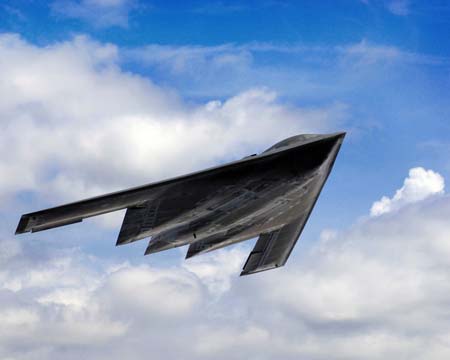The Air F orce’s commitment to field a penetrating, survivable next-generation bomber in 2018 is “uncertain” at best and USAF’s advocacy of the new platform “lacks conviction and credibility,” the Center for Strategic and International Studies states in its new report. But there’s more sobering news, according to CSIS: Having a penetrating bomber by 2018 “is probably not doable,” because the technology is not mature enough, writes author Clark Murdock, senior adviser at CSIS, based on input from subject matter experts, including ex Air Force officers and former senior Defense Department officials. And trying to rush immature technology in that timeframe “will lead to skyrocketing costs,” making the system “almost certainly not affordable,” he says. Further, achieving the type of persistence in the platform so that it could hold targets at risk in highly defended areas deep inside enemy territory, is “extremely challenging and is probably not achievable in technologies mature enough for fielding in 2018,” reads the report. Perhaps a better option, it argues, is to allow more time for the technologies to mature and instead field a more affordable “penetrating bomber the nation needs” in the mid 2020s. As an interim option, Murdock recommends that the Air Force consider fielding “a commercial-derivative bomber” optimized for conducting low-end missions such as close air support in low-threat environments if the B-52s and B-1s still in service around 2018 are not capable of supporting the volume of these missions. Air Force officials maintain that the QDR-driven date of 2018 can be met. And, the likely contractors—the new Boeing and Lockheed Martin bomber team and Northrop Grumman—all seem to think the new bomber is doable by 2018. A top Boeing official said last fall that technologies are mature enough to field an advanced bomber, and a Northrop counterpart agreed, but both cited funding as the critical issue.
orce’s commitment to field a penetrating, survivable next-generation bomber in 2018 is “uncertain” at best and USAF’s advocacy of the new platform “lacks conviction and credibility,” the Center for Strategic and International Studies states in its new report. But there’s more sobering news, according to CSIS: Having a penetrating bomber by 2018 “is probably not doable,” because the technology is not mature enough, writes author Clark Murdock, senior adviser at CSIS, based on input from subject matter experts, including ex Air Force officers and former senior Defense Department officials. And trying to rush immature technology in that timeframe “will lead to skyrocketing costs,” making the system “almost certainly not affordable,” he says. Further, achieving the type of persistence in the platform so that it could hold targets at risk in highly defended areas deep inside enemy territory, is “extremely challenging and is probably not achievable in technologies mature enough for fielding in 2018,” reads the report. Perhaps a better option, it argues, is to allow more time for the technologies to mature and instead field a more affordable “penetrating bomber the nation needs” in the mid 2020s. As an interim option, Murdock recommends that the Air Force consider fielding “a commercial-derivative bomber” optimized for conducting low-end missions such as close air support in low-threat environments if the B-52s and B-1s still in service around 2018 are not capable of supporting the volume of these missions. Air Force officials maintain that the QDR-driven date of 2018 can be met. And, the likely contractors—the new Boeing and Lockheed Martin bomber team and Northrop Grumman—all seem to think the new bomber is doable by 2018. A top Boeing official said last fall that technologies are mature enough to field an advanced bomber, and a Northrop counterpart agreed, but both cited funding as the critical issue.
The Air Force is requesting about $141 million for initial enlistment bonuses in its fiscal 2026 budget, while Space Force wants $13 million.
